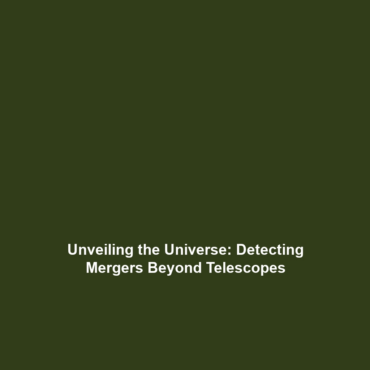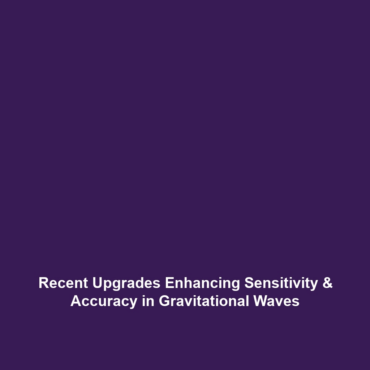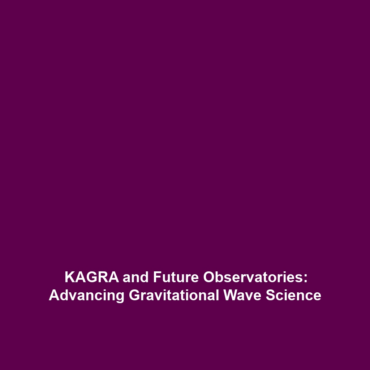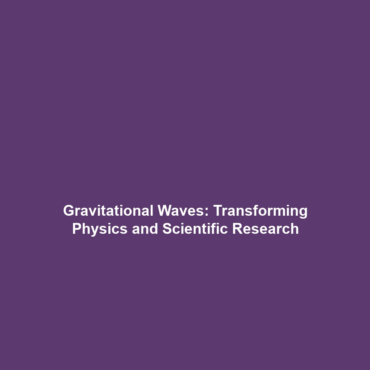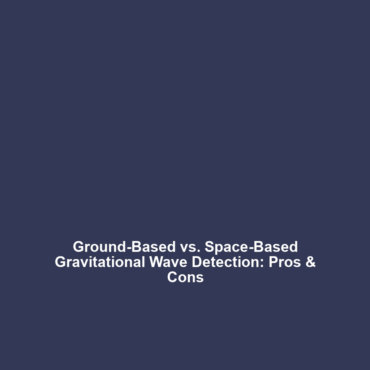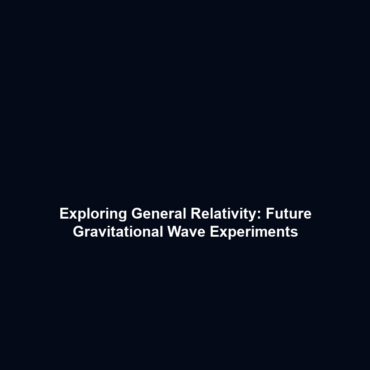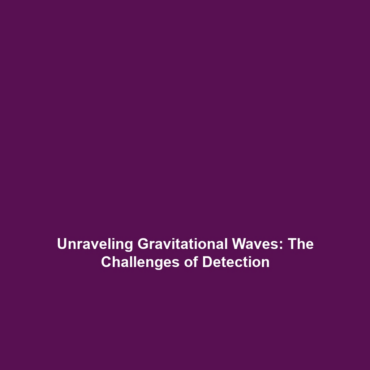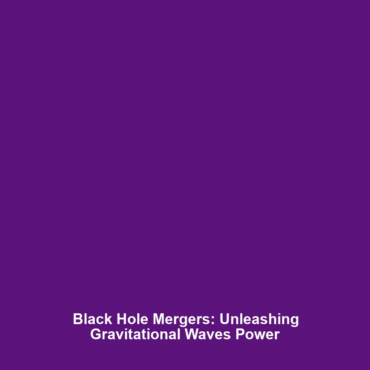The Potential to Detect Mergers or Explosions Beyond What We Can See with Telescopes
Introduction
In the realm of astronomy, the detection of cosmic events such as mergers of black holes and stellar explosions has traditionally relied on optical telescopes. However, gravitational waves present a groundbreaking opportunity to uncover phenomena hidden from these instruments. By listening to the ripples in spacetime created by such cataclysmic events, researchers can gather insights that are unattainable through conventional means. This emerging field not only enhances our understanding of the universe but also raises significant questions about the underlying mechanics of cosmic events.
Key Concepts
Understanding Gravitational Waves
Gravitational waves are disturbances in spacetime caused by the acceleration of massive objects. They were first predicted by Albert Einstein through his General Theory of Relativity in 1916. Key concepts related to the detection of mergers and explosions through gravitational waves include:
- Wave Propagation: Gravitational waves travel at the speed of light and carry information about their origins.
- Interferometry: The technology employed in LIGO (Laser Interferometer Gravitational-Wave Observatory) uses laser beams to detect changes in distance caused by passing waves.
- Signal Analysis: Advanced algorithms are utilized to separate gravitational wave signals from background noise, enabling scientists to identify specific cosmic events.
Applications and Real-World Uses
The potential to detect mergers or explosions through gravitational waves extends beyond theoretical astrophysics into practical applications. Significant uses include:
- Astronomical Collaboration: Gravitational wave detections often coincide with electromagnetic observations, allowing for comprehensive multi-messenger astronomy.
- Theoretical Validation: These detections provide critical tests for theories in general relativity and black hole physics.
- Cosmological Measurement: Analyzing gravitational waves contributes to measurements of the universe’s expansion rate and the mass distribution of cosmic structures.
Understanding how gravitational waves can reveal cosmic mergers and explosions offers profound insights into our universe’s fabric.
Current Challenges
Despite advancements in this field, several challenges and limitations remain:
- Noise Interference: Gravitational wave signals are subtle, making them susceptible to noise from terrestrial sources.
- Sensitivity Limitations: Current detectors have a limited range, which restricts the number and types of events that can be observed.
- Data Overload: The vast amount of data generated requires sophisticated processing techniques to extract meaningful signals.
Future Research and Innovations
The future of detecting cosmic mergers and explosions through gravitational waves is poised for exciting breakthroughs. Upcoming innovations include:
- Next-Generation Detectors: Projects like the Einstein Telescope aim to increase sensitivity and extend detection capabilities.
- Space-Based Observatories: Concepts such as the Laser Interferometer Space Antenna (LISA) will allow for detection of low-frequency gravitational waves.
- Improved Algorithms: Enhanced data analysis techniques promise to refine signal identification and interpretation.
These advancements will revolutionize our understanding of the cosmos and open new avenues for exploration.
Conclusion
The ability to detect mergers and explosions beyond the capabilities of traditional telescopes significantly enhances our comprehension of the universe. Gravitational waves emerge as a vital tool in this endeavor, paving the way for future discoveries and collaborations. As technology advances, the potential to unveil the mysteries of the cosmos will only grow. To stay informed about developments in gravitational waves and their impact on astronomical research, consider exploring more resources on gravitational waves and related topics.
